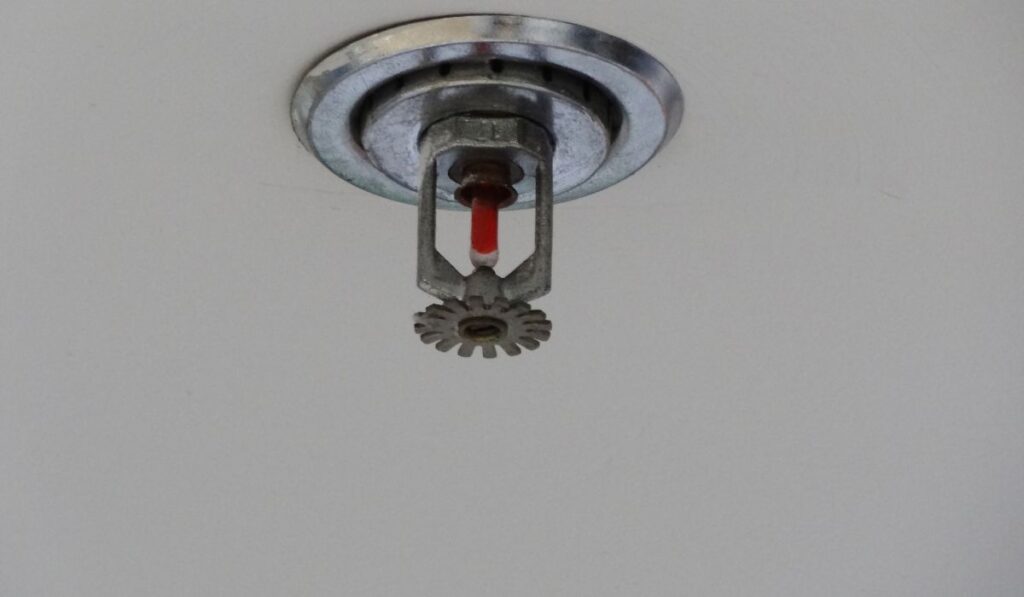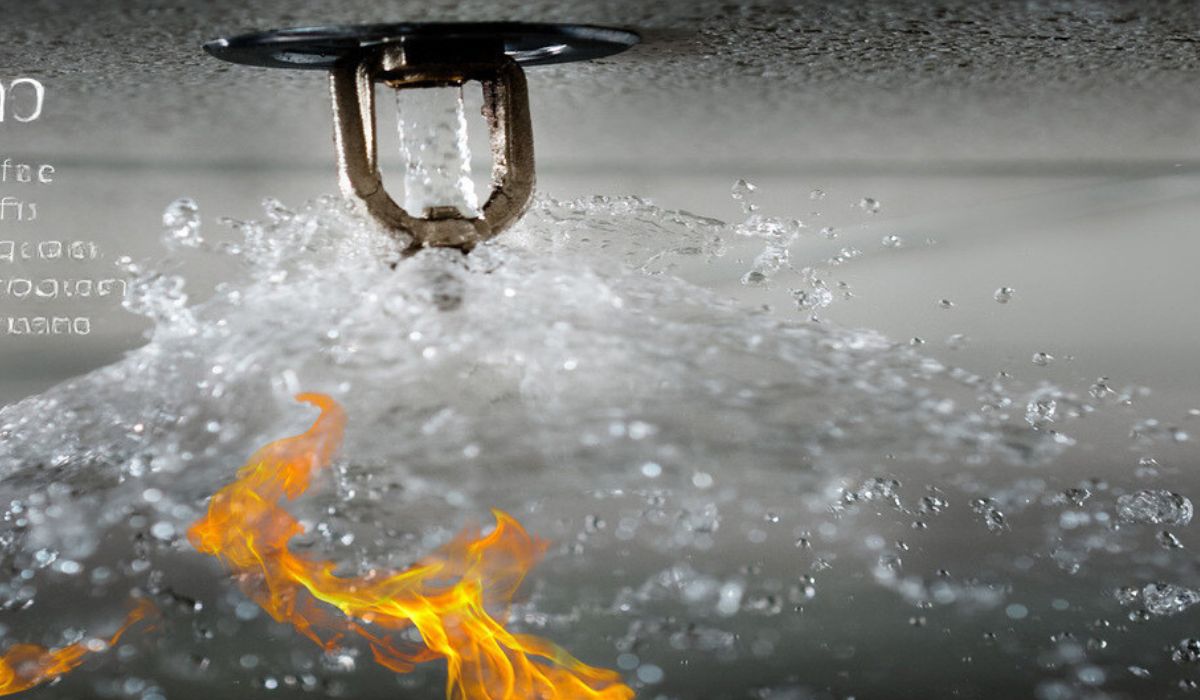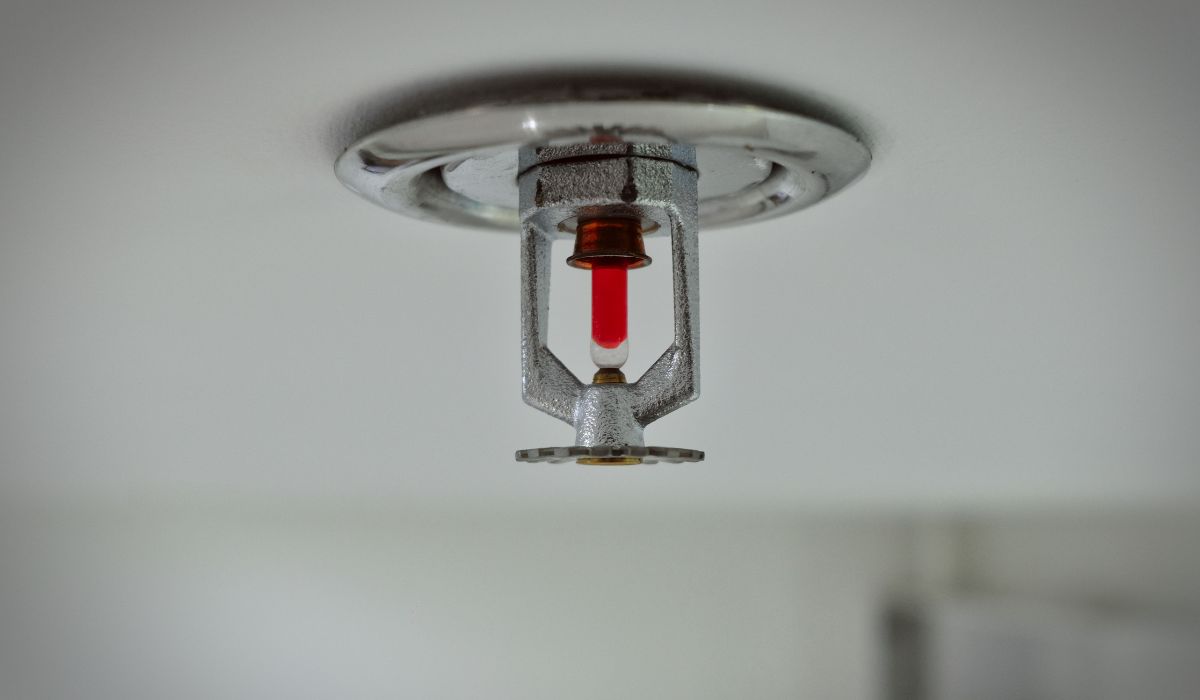The main types of fire sprinkler systems are wet pipe, dry pipe, deluge, and pre-action. Each system suits different fire risk situations and environmental conditions.
Understanding the various types of fire sprinkler systems is crucial for ensuring the right protection for your property. Wet pipe systems, filled with pressurized water, are the most common and function immediately when heat activates the sprinklers. Dry pipe systems, which hold air until sprinklers release, are perfect for environments prone to freezing.
Deluge systems, typically used in high-hazard areas, release water through all sprinklers simultaneously once a fire is detected. Pre-action systems combine elements of wet and dry systems, requiring a two-step activation process which helps prevent accidental water discharge, making them ideal for locations with valuable equipment or assets. Selecting the right fire sprinkler system depends on various factors, including building specifications, occupancy, and local fire codes.
Introduction To Fire Sprinkler Systems

An Introduction to Fire Sprinkler Systems marks the starting point in our comprehensive guide to safeguarding structures from fires. Fire sprinklers are crucial as an immediate response to fire outbreaks, acting autonomously to control or extinguish flames.
Importance Of Fire Suppression
Fire suppression systems save lives and protect property by controlling and often extinguishing a fire before firefighters arrive. This quick response is vital in mitigating damage and preventing potential disaster. Key benefits include:
- Decreased fire damage: Lessening repair costs and downtime.
- Protection of assets: Securing both the premises and valuable contents.
- Safety for occupants: Providing critical escape time during emergencies.
Evolution Of Sprinkler Technology
Fire sprinkler systems have evolved significantly since their invention in the 19th century. With advancements in technology, each generation of sprinklers has improved in efficiency, effectiveness, and ease of installation.
| Generations | Features | Benefits |
|---|---|---|
| 1st Generation | Heat-sensitive elements | Basic fire suppression |
| 2nd Generation | Automatic functionalities | Improved response times |
| 3rd Generation | Smart systems with alerting | Enhanced safety and control |
Innovations continue to emerge, shaping the future of fire prevention and ensuring greater protection for all.
Wet Pipe Systems
Wet Pipe Systems are the most common type of fire sprinkler systems found in buildings. They’re ideal for climates where pipes can’t freeze. Let’s dive into what makes them a popular choice.
How Wet Pipe Systems Work
Think of wet pipe systems as vigilant guardians always ready for action. Water fills the pipes, poised to douse flames. When a fire triggers the system, only the sprinkler heads above the fire activate, releasing water.
- Fire heats the sprinkler head.
- The glass bulb inside bursts.
- Water sprays out over the fire.
Advantages And Considerations
Wet pipe systems offer many benefits. They’re reliable and respond fast to fires. Maintenance is simple and they’re cost-effective. Before choosing, think about these points:
| Advantages | Considerations |
|---|---|
| Quick fire response | Not for freezing areas |
| Less complex | Water damage risk |
| Low maintenance cost | Regular inspections needed |
Dry Pipe Sprinklers
Among the diverse kinds of fire sprinkler systems, Dry Pipe Sprinklers stand out. They use pressurized air or nitrogen in the pipes rather than water. This makes them perfect for environments where freezing temperatures could freeze water in a wet pipe system.
Operation Of Dry Pipe Systems
The operation of Dry Pipe sprinkler systems is straightforward.
- The pipes contain air under pressure.
- When a fire triggers a sprinkler head, the air escapes.
- The drop in pressure opens a dry pipe valve.
- Water flows through the pipes and out the activated sprinklers.
The system’s design ensures water delivery to the fire quickly, but with a slight delay.
Applications And Limitations
| Applications | Limitations |
|---|---|
|
|
Dry Pipe Sprinkler Systems fit certain settings but come with trade-offs.
Areas prone to freezing benefit from these systems. Yet, buildings that require quick action might need different solutions.
Deluge Systems
Deluge fire sprinkler systems are among the most powerful options for fire suppression. Unique from other systems, deluge setups are ideal for high-hazard areas. They work by saturating an area with water, quickly controlling and extinguishing fires.
When To Use Deluge Systems
Deluge systems suit specific situations:
- Areas with high fire risk
- Flammable liquid storage
- Aircraft hangars
- Power plants
- Chemical facilities
Key Characteristics
Deluge systems stand out due to their design:
| Feature | Detail |
|---|---|
| Open Sprinklers | All sprinkler heads are open and unsealed |
| Activation | Triggered by a separate fire detection system |
| Water Delivery | Instantly floods the entire area when activated |
| Use Cases | Ideal for areas needing rapid response to fire |
Pre-action Sprinkler Systems
Pre-Action Sprinkler Systems are a unique type of fire suppression. They offer a two-step process for fire protection. These systems keep the water from the piping until a fire is detected. When fire is detected, the system fills the piping with water and releases it through the sprinklers.
Mechanism And Uses
Pre-Action Sprinkler Systems have seve

ral components. They have smoke detectors, a pre-action valve, and a water supply. Once smoke is detected, the pre-action valve opens. Water fills the pipes. The sprinklers activate only if high heat is present. This prevents water damage from accidental activation.
- Smoke Detection – Triggers pre-action valve.
- Pre-Action Valve – Controls water flow to pipes.
- Water Supply – Fills pipes once alarm trips.
- Heat Sensitive Sprinklers – Discharge water when needed.
These systems are perfect for areas with valuable items or electronics. They protect data centers, libraries, and art galleries.
Benefits In Sensitive Environments
In environments where items can be easily damaged by water, Pre-Action Systems are ideal. They allow controlled responses to fires. The systems also prevent accidental discharge.
| Benefit | Description |
|---|---|
| Minimize Damage | Water is released only when a fire is confirmed. |
| Dual Detection | Requires both smoke and heat to start water flow. |
| Prevent False Alarms | Accidental activation is highly unlikely. |
This feature especially benefits server rooms, museums, or places with rare books.
Foam Water Sprinkler Systems
Foam water sprinkler systems provide powerful protection against fires. These systems mix foam with water. This creates a foamy substance. This substance can blanket fires and stop them fast. These systems are great for special fire risks. They target fires from flammable liquids. Think about places like airports or chemical plants. Foam water sprinklers are perfect there.
Combating Flammable Liquid Fires
Flammable liquid fires are tough.they can spread quickly. They are also very hot. Water alone can’t beat them. Foam water sprinklers combine foam concentrate with water. So, they make a fire-fighting foam. The foam smothers the fire. It cools the fire down. It stops the fire from getting more oxygen. This system is smart for areas with flammable liquids.
System Design Elements
Designing a foam water sprinkler system is important. Professionals use special calculations. They must choose the right foam concentrate. They also think about water supply. Pipe size matters too. All these make sure the system works right.
Here are key parts of the system’s design:
- Foam concentrate storage: Big tanks hold the foam.
- Proportioner: It mixes foam and water at the right ratio.
- Control valves: They control the foam and water flow.
- Discharge devices: These are the sprinkler heads.
Each element boosts performance. The system needs to work in emergencies. Quality design ensures this happens.
Water Mist Systems
Imagine a fire breaks out and a fine mist whooshes out, taming the flames. This isn’t science fiction; it’s what Water Mist Systems do. Unlike traditional sprinklers, they use a fine spray to control, suppress, or extinguish fires. Let’s explore how these systems operate and their benefits for specific hazards.
Technique Of Suppression
Water Mist Systems employ high-pressure to create a fine spray. This mist cools the fire and displaces oxygen. To imagine this, think of how a foggy day makes everything damp. These systems work similarly to douse fires quickly.
- The mist absorbs heat, which lowers the temperature.
- Small water droplets make the mist cover more area.
- It also blocks heat radiation, which can prevent fire spread.
Advantages For Specific Hazards
Water Mist Systems shine in situations where water damage is a concern. They’re perfect for places like data centers, where traditional sprinklers could wreak havoc on electronics.
| Scenario | Advantage |
|---|---|
| Electrical Fires | Low water volume reduces equipment damage. |
| Archives or Museums | Gentle mist protects delicate items. |
| Restaurants | Quick suppression limits risk to patrons. |
Water Mist Systems offer tailored fire protection. They protect lives and assets with minimal damage or disruption. These systems are ideal for high-risk areas that require a delicate touch.
Selecting The Right Sprinkler System
Selecting the Right Sprinkler System is crucial for effective fire safety.
Numerous options exist, each tailored to specific needs.
This section guides you through the selection process.
Considerations For Different Occupancies
Identifying the occupancy type is a top priority.
Different spaces demand unique sprinkler solutions:
- Residential areas need fast-acting systems.
- Commercial environments require diverse sprinkler designs.
- Industrial settings can benefit from robust, high-capacity sprinklers.
Select sprinklers that match the specific use of your space.
It ensures optimal protection and efficiency.
Compliance With Fire Codes
Fire codes vary by location and building type.
Staying informed is key.
- Consult with local fire authorities for regulations.
- Implement a system meeting or exceeding the guidelines.
Partner with certified professionals for installation.
Ensure your system is up to code.
Maintenance And Inspection
Keeping a fire sprinkler system in top shape is a life-saving task. Regular maintenance and inspections ensure they work when needed. Without these checks, systems might fail. Let’s break down these vital steps.
Routine Check-up Protocols
Just like a car, fire sprinkler systems need regular check-ups. These is essential to find small issues before they grow.
- Weekly inspections for gauges in wet pipe systems
- Monthly checks on control valves and hydraulic nameplates
- Quarterly checks for water flow and alarm devices
- Annual full system inspection by professionals
Following this schedule keeps the system ready at all times.
Ensuring System Reliability
To trust your fire sprinkler system, ensure its reliability. This means testing and servicing beyond visual inspections.
- Perform main drain tests annually to check water pressure.
- Test sprinkler setting with a fire simulation.
- Replace any worn components immediately.
- Keep records of all maintenance activities.
| Action | Frequency | Notes |
|---|---|---|
| Inspect Gauges | Weekly | Check for normal pressure readings |
| Test Alarms | Quarterly | Ensure they sound during emergencies |
A detailed log and immediate action on issues are keys to reliability.
Innovations In Fire Sprinkler Technology
Fire safety technology is rapidly evolving, and sprinkler systems are no exception. The ‘Innovations in Fire Sprinkler Technology’ section explores cutting-edge advancements. These innovations aim to enhance efficiency, response time, and overall effectiveness in fire suppression. Let’s delve into the exciting developments in this life-saving technology.
Emerging Trends
New materials and designs are making sprinklers more effective. Here are key trends:
- Eco-friendly Sprinklers: Reduce water usage and environmental impact.
- Smart Sprinkler Systems:
- Integrate with building automation.
- Provide real-time alerts.
- Flexible Sprinkler Piping: Offers easier installation and better durability.
Software Advancements enhance system precision:
- Automated flow calculations.
- Advanced mapping for optimal coverage.
Manufacturers now focus on modular systems. These can be customized for any building.
Future Prospects In Fire Safety
What’s next for sprinklers? Exciting prospects include:
| Technology | Prospects |
|---|---|
| Artificial Intelligence | Predictive analytics for early detection |
| Water Mist Systems | Minimize damage with fine sprays |
| Biodegradable Fire Suppressants | Eco-friendly alternatives to traditional chemicals |
Inclusion of IoT devices is a game-changer:
- Real-time monitoring of environments.
- Integration with emergency services.
These advancements aim for better protection with less maintenance. They also work to reduce false alarms.
Frequently Asked Questions Of Types Of Fire Sprinkler Systems
What Are The 4 Types Of Fire Sprinkler Systems?
The four types of fire sprinkler systems are wet pipe, dry pipe, deluge, and pre-action systems. Each system activates by heat or smoke detection to control and extinguish fires.
What Are The Three 3 Types Of Conventional Sprinkler Systems?
The three types of conventional sprinkler systems are wet pipe, dry pipe, and pre-action systems. Each system operates differently to protect buildings from fire hazards.
What Are The Four Types Of Fire Protection System?
The four types of fire protection systems are fire alarms, fire sprinklers, fire extinguishers, and fire suppression systems. These systems detect, control, or extinguish fires, ensuring safety.
What Is The Most Commonly Used Fire Sprinkler System?
The most commonly used fire sprinkler system is the wet pipe system. It features automatic sprinklers connected to a water-filled supply piping.
What Are Fire Sprinkler Systems?
Fire sprinkler systems are active fire protection methods designed to release water or extinguishing agents when a fire is detected, helping to control or extinguish fires in buildings.
How Do Fire Sprinklers Get Activated?
Fire sprinklers are activated by heat from a fire, typically when the ambient temperature reaches a certain level, causing a glass bulb or fusible link to break and release water.
Conclusion
Fire sprinkler systems play a vital role in safety and property protection. We’ve explored various types, each suited for different settings. Remember, choosing the right system is crucial for effective fire suppression. Consult a professional to ensure your space is well-equipped and compliant with safety regulations.
Keep your premises secure with the appropriate fire sprinkler solution.

I’m Abdus Sobur, a highly skilled and professional Fire Safety Officer with a passion for safeguarding lives and property. Over the course of my career, I’ve conducted numerous successful fire safety audits, earning a reputation for excellence in ensuring public safety.
In addition to my role as a Fire Safety Officer, I’m also dedicated to raising awareness about the importance of fire safety. Through my blog, I share insights into the functions of different fire safety equipment, aiming to empower individuals with the knowledge they need to protect themselves and their communities.
I’m driven by a deep commitment to promoting fire safety awareness and preventing fire-related incidents.

